Imagine stepping into a world where your hotel experience transcends the four walls of your room. Lush gardens, cascading water features, and hidden pathways beckon you to explore.
This, my friends, is the power of hotel landscape design. But how can a well-crafted landscape elevate your stay from ordinary to extraordinary?
Let’s delve into the intriguing world of designing landscapes that not only beautify your hotel but also tell a unique story and leave a lasting impression on every guest.
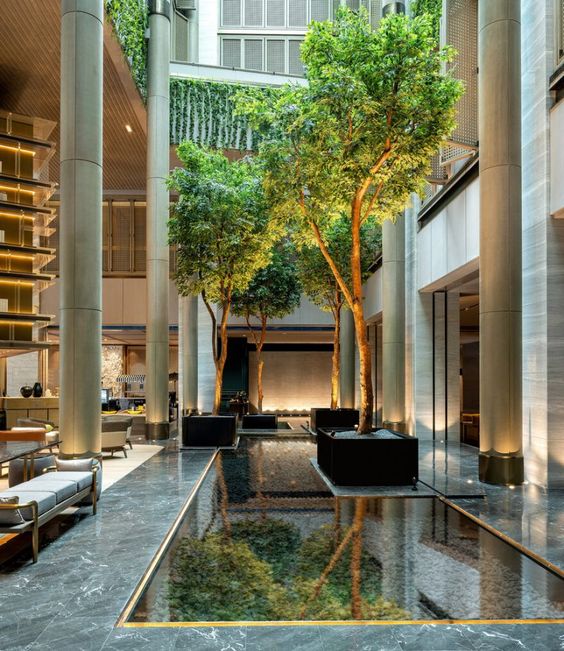
Hotel landscape architecture
Hotel landscape architecture refers to the specialized field of design and planning focused on creating outdoor spaces surrounding hotels.
This includes the development of gardens, courtyards, pathways, recreational areas, and other outdoor amenities that enhance the overall guest experience.
Elements of Landscape Architecture
Some key elements of landscape architecture commonly found in hotel settings include:
- Hardscape Elements: This includes pathways, driveways, patios, decks, and other paved areas that provide structure and functionality to the landscape.
- Softscape Elements: Softscape elements encompass all living components of the landscape such as plants, trees, shrubs, and grass. These vegetation choices are essential for adding color, texture, and a sense of tranquility to the outdoor space.
- Water Features: Water features like fountains, ponds, waterfalls, or pools can create a serene and relaxing atmosphere, enhancing the visual appeal of the landscape.
- Lighting Design: Proper lighting design is crucial for highlighting focal points, guiding pathways, and creating a welcoming ambiance during the evening or nighttime hours.
- Seating Areas: Providing comfortable seating options such as benches, chairs, or lounges allows guests to relax and enjoy the outdoor environment.
- Art and Sculptures: Incorporating art pieces or sculptures can add a touch of sophistication and visual interest to the landscape design.
By carefully integrating these elements, hotel landscape architecture can enhance the overall guest experience, create a memorable outdoor setting, and contribute to the overall charm and appeal of the property.
Juvet landscape hotel architecture
Located in Norddal, Norway, the Juvet Landscape Hotel is a masterpiece designed by Jensen & Skodvin Architects. Completed in 2008, this unique hotel blends seamlessly with its surroundings.
Each room at the Juvet Landscape Hotel is like a detached, small, independent house. Most strikingly, one or sometimes two walls of each room are constructed entirely in glass. This design choice ensures that every guest enjoys their unobstructed view of the dramatic landscape outside, which changes with the weather, time of day, and season.
Best hotel landscape design
Defining the “best” hotel landscape design is subjective, as preferences and tastes vary greatly. However, some elements consistently elevate these spaces:
- Cohesiveness: The design seamlessly blends with the hotel’s architecture and theme, creating a unified and visually appealing environment.
- Functionality: The landscape provides usable spaces for guests to enjoy, whether it’s relaxing by a pool, exploring winding pathways, or indulging in alfresco dining.
- Sustainability: Utilizing native plants, water-efficient irrigation systems and eco-friendly materials demonstrates a commitment to environmental responsibility and creates a healthy ecosystem.
Small Hotel Landscape Design
Limited space doesn’t have to limit creativity. Small hotels can leverage clever design techniques to create impactful landscapes:
- Vertical gardens: Utilize walls and fences for lush greenery, maximizing space and adding visual interest.
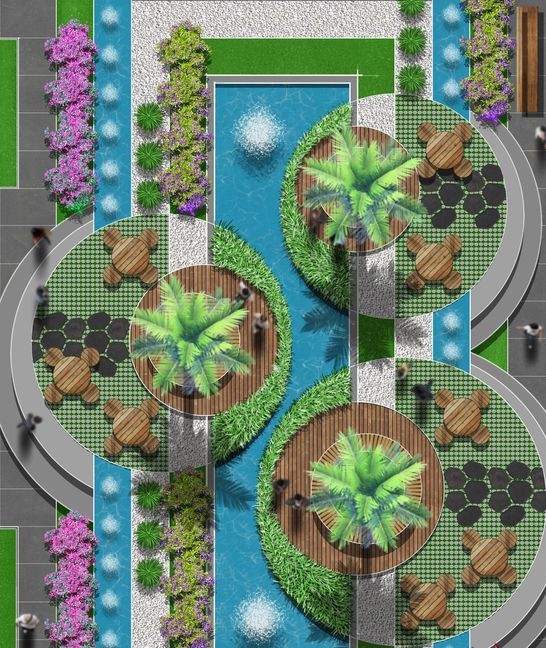
- Compact pools or water features: Opt for smaller water elements that add a touch of tranquility without sacrificing precious space.

- Multifunctional spaces: Design areas that can serve multiple purposes, like a patio that doubles as a dining and relaxation area.
Resort hotel landscape design
Resort hotels offer ample space to create sprawling landscapes that cater to diverse guest desires:
- Themed areas: Create distinct zones inspired by specific themes, like a tropical oasis, a Zen garden, or a children’s play area.
- Diverse water features: Incorporate swimming pools, lazy rivers, waterfalls, or even man-made lagoons to cater to various water activities.
- Extensive pathways and trails: Encourage exploration and provide scenic walks or jogging routes within the resort grounds.
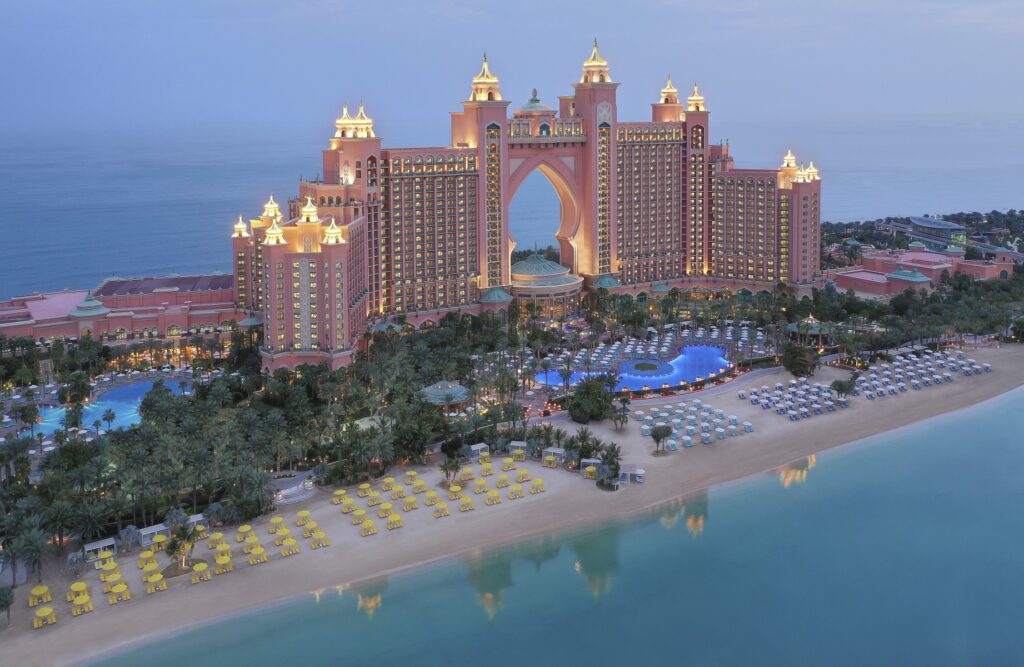
5-star hotel landscape design
Luxury hotels set the bar high for landscape design, often incorporating these elements:
High-quality materials: Utilize luxurious materials like natural stone, exotic wood, and custom-designed water features for an opulent feel.
Signature elements: Design unique landscape features that become synonymous with the hotel, creating a sense of exclusivity and memorability.
Impeccable maintenance: Ensure the landscape is meticulously maintained, showcasing its beauty and reflecting the hotel’s commitment to excellence.
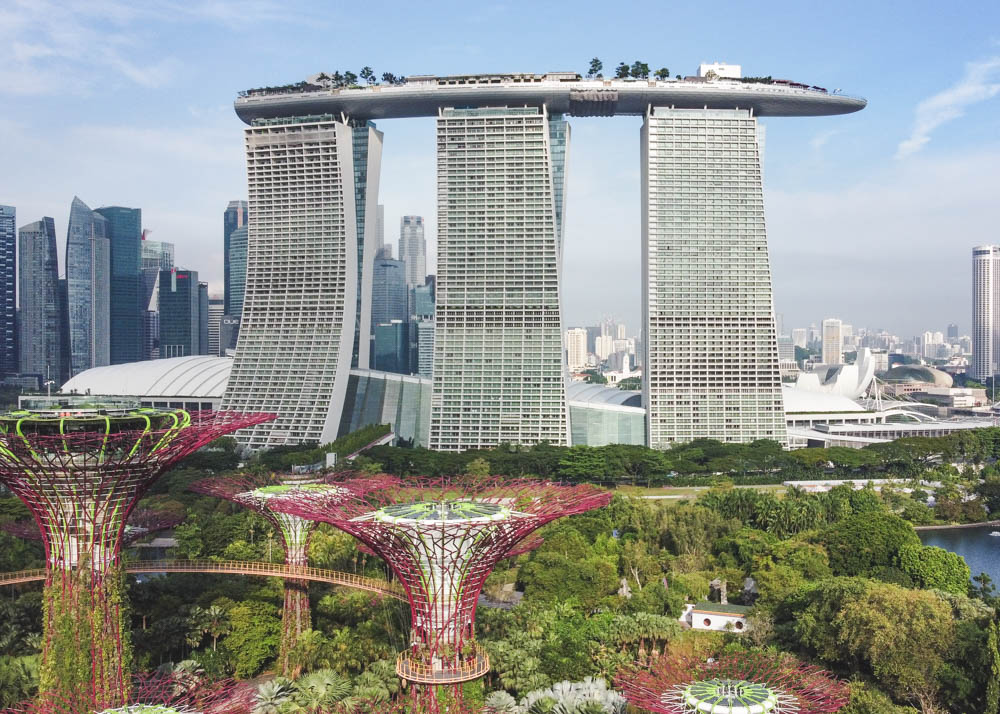
Hotel entrance landscape design
When designing a hotel entrance landscape, it’s essential to create a welcoming and memorable first impression for guests. Here are some key elements to consider:
- Greenery and Plants: Incorporate lush greenery, colorful flowers, and well-maintained plants to add a touch of natural beauty. This can create a sense of tranquility and freshness as guests arrive.
- Pathways and Signage: Ensure clear pathways that lead guests smoothly from the entrance to the reception area. Thoughtfully designed signage can guide guests and enhance the overall aesthetic of the entrance.
- Lighting: Lighting plays a crucial role in setting the mood and highlighting key features of the entrance landscape. Consider using soft, ambient lighting to create a warm and inviting atmosphere, especially during the evening.
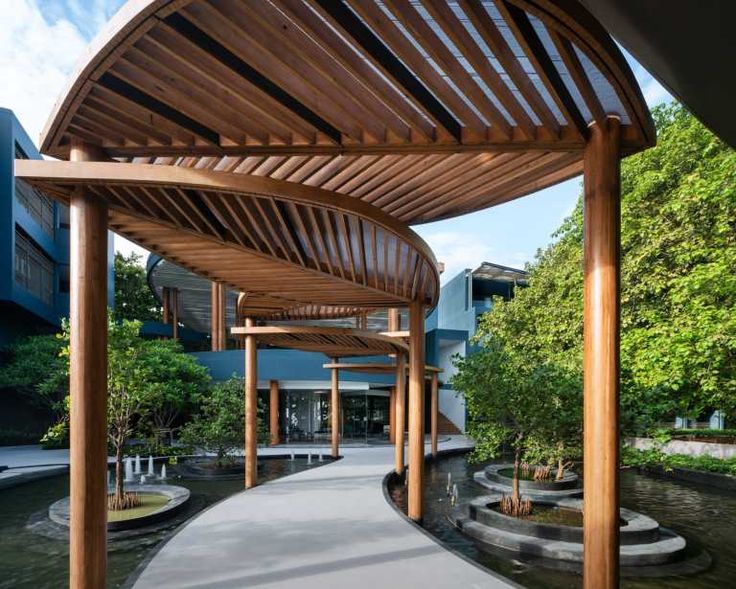
- Water Features: Incorporating water features such as fountains, ponds, or small waterfalls can add a sense of sophistication and serenity to the entrance landscape.
- Seating Areas: Provide comfortable seating areas near the entrance where guests can relax, wait for their transportation, or simply enjoy the surroundings.
- Local Flair: Reflect the local culture and environment in the design elements. This could include using local materials, plants, or design motifs that pay homage to the hotel’s location.
By carefully integrating these elements, a well-designed hotel entrance landscape can set the tone for a memorable and enjoyable stay for guests.
Hotel Landscape Design Ideas
Hotel landscape design plays a crucial role in creating a memorable and immersive guest experience. Here are some inspiring ideas to spark your creativity:
1. Embrace Nature
Tropical Oasis: Create a lush and relaxing atmosphere with palm trees, vibrant flowers, and water features.
- Zen Garden: Foster tranquility with raked gravel, strategically placed rocks, and minimalistic greenery.
- Mediterranean Courtyard: Capture the essence of the Mediterranean with terracotta tiles, citrus trees, and bubbling fountains.

2. Focus on Functionality
- Swimming Pool and Decks: Offer guests a refreshing escape with inviting pools, comfortable lounge chairs, and shade umbrellas.
- Outdoor Dining Areas: Create a scenic setting for al fresco dining with comfortable furniture, pergolas, and string lights.
- Fire Pits and Seating Areas: Foster social interaction and create a cozy atmosphere with fire pits surrounded by comfortable seating.

3. Enhance the Arrival Experience
- Grand Entrances: Make a lasting first impression with imposing arches, well-maintained walkways, and water features.
- Welcoming Pathways: Guide guests to the hotel with inviting pathways lined with flowers, shrubs, and low lighting.
- Signage and Lighting: Ensure clear and elegant signage for wayfinding-finding and utilize subtle lighting to create a warm and inviting atmosphere at night.
formal landscape design ideas
- Symmetrical Layouts: Arrange elements like walkways, gardens, and water features in a mirrored fashion for a formal and structured appearance.
- Hedging and Topiaries: Utilize neatly trimmed hedges and topiary shrubs to add definition and formality to the landscape.
- Classic Statues and Fountains: Incorporate classical sculptures or ornate fountains as focal points to enhance the formal aesthetic.
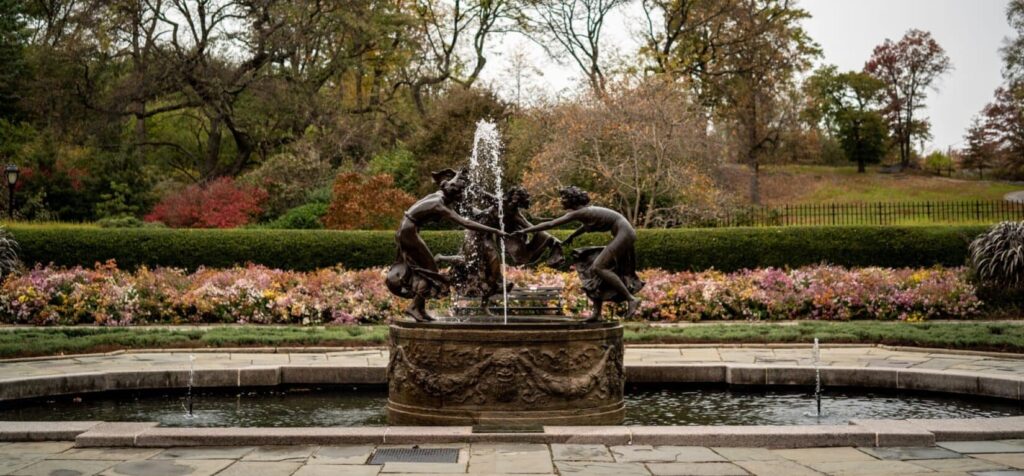
landscape border design ideas
- Curved Edging: Soften straight lines and create visual interest with curved borders made of stones, bricks, or low-maintenance plants.
- Mixed Planting: Combine different textures and colors of plants within the border to add visual appeal and attract pollinators.
- Mulch or Gravel: Utilize mulch or gravel around the border to suppress weeds, retain moisture, and add a finishing touch.
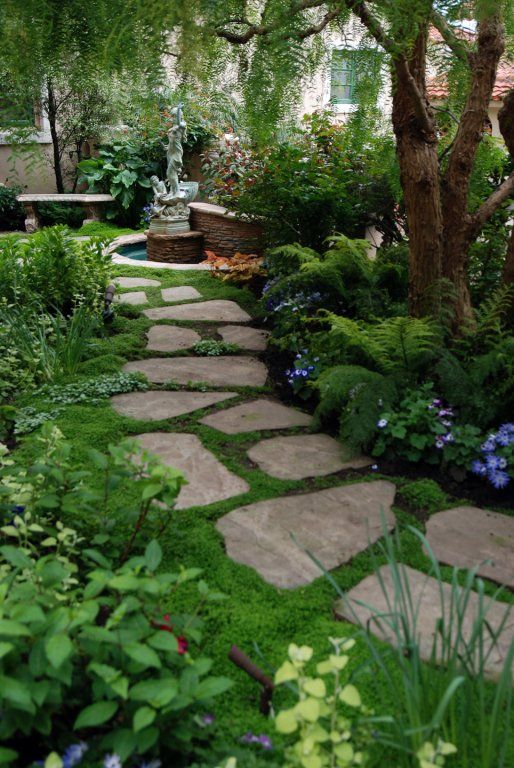
Simple Landscape Design Ideas
- Low-Maintenance Plants: Opt for native or drought-tolerant plants that require minimal watering and maintenance.
- Container Gardening: Utilize colorful planters filled with flowers, herbs, or small shrubs to add pops of color and life to the space.
- Gravel Pathways: Create low-maintenance pathways with well-compacted gravel for a simple and natural look.
Hotel indoor landscape design
Creating an inviting and visually appealing indoor landscape design for a hotel involves incorporating elements that enhance the overall guest experience.
Here are some ideas for indoor landscape design in a hotel setting:
- Greenery: Incorporate plants and greenery throughout the hotel interiors, such as in the lobby, common areas, and even in guest rooms. Choose low-maintenance plants that can thrive indoors and add a touch of nature to the space.
- Living Walls: Install living walls or vertical gardens as a focal point in the lobby or other prominent areas. These can act as a natural air purifier and bring a sense of freshness to the interior environment.
- Water Features: Consider incorporating water features like indoor fountains, ponds, or cascading waterfalls to create a soothing ambiance. Water elements can help to reduce noise and add a sense of tranquility to the space.
- Lighting: Use a combination of natural and artificial lighting to highlight the indoor landscape elements. Consider using LED lights to showcase plants and create a warm and inviting atmosphere.
- Seating Areas: Design cozy seating areas surrounded by plants and greenery to create inviting spaces for guests to relax and unwind. Incorporate natural materials like wood and stone to complement the indoor landscape design.
By incorporating these elements into the indoor landscape design of a hotel, you can create a welcoming and relaxing environment that enhances the overall guest experience.
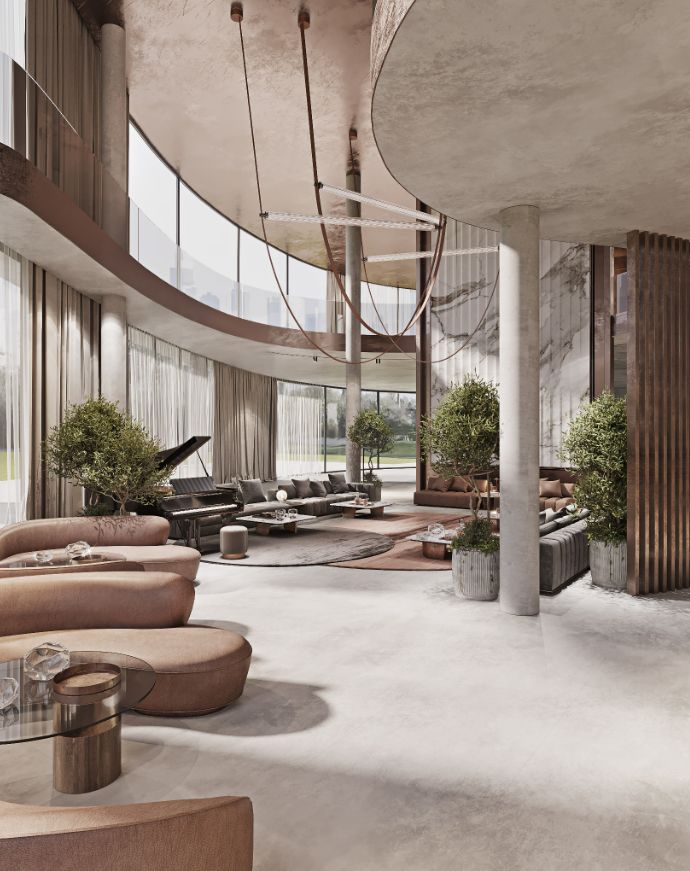
Hotel Landscape Design by Glamorous
Glamorous Design Company is renowned for its unparalleled expertise in crafting breathtaking hotel landscape designs that redefine luxury and elegance.
With meticulous attention to detail and a commitment to excellence, our team transforms outdoor spaces into captivating retreats that leave a lasting impression on guests.
From lush gardens and tranquil water features to stylish seating areas and innovative recreational amenities, each landscape design reflects our dedication to creating unforgettable guest experiences. Ready to elevate your hotel’s outdoor ambiance to new heights?
Contact us today to schedule a consultation and bring your vision to life. Visit our website or call us to get started.
FAQ
What are landscape design techniques?
Landscape design techniques encompass various methods and principles used to plan and create outdoor spaces. These techniques include considerations such as balance, proportion, unity, harmony, contrast, and focalization to achieve aesthetically pleasing and functional landscapes.
What are the basic elements of landscape design?
The basic elements of landscape design include vegetation (plants, trees, shrubs), hardscape (paths, walls, patios), water features (ponds, fountains, streams), landforms (hills, slopes, terraces), and structures (gazebos, pergolas, seating areas). These elements are combined and arranged to create cohesive and visually appealing outdoor environments.
What is in landscape design?
Landscape design encompasses the planning, layout, and creation of outdoor spaces, incorporating elements such as vegetation, hardscape features, water elements, landforms, and structures. The goal of landscape design is to create functional, aesthetically pleasing, and sustainable environments that enhance the overall quality of life and provide enjoyment for users.



